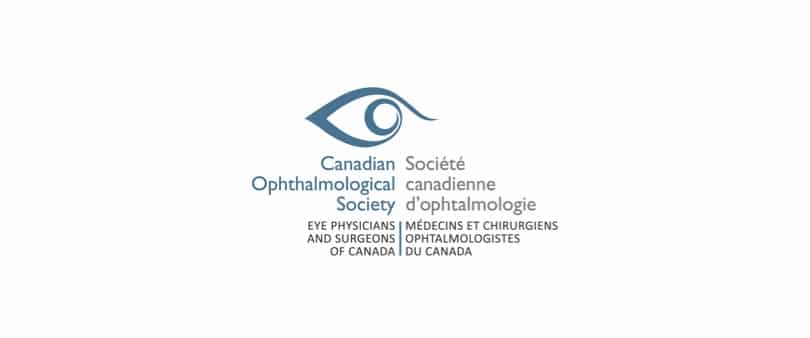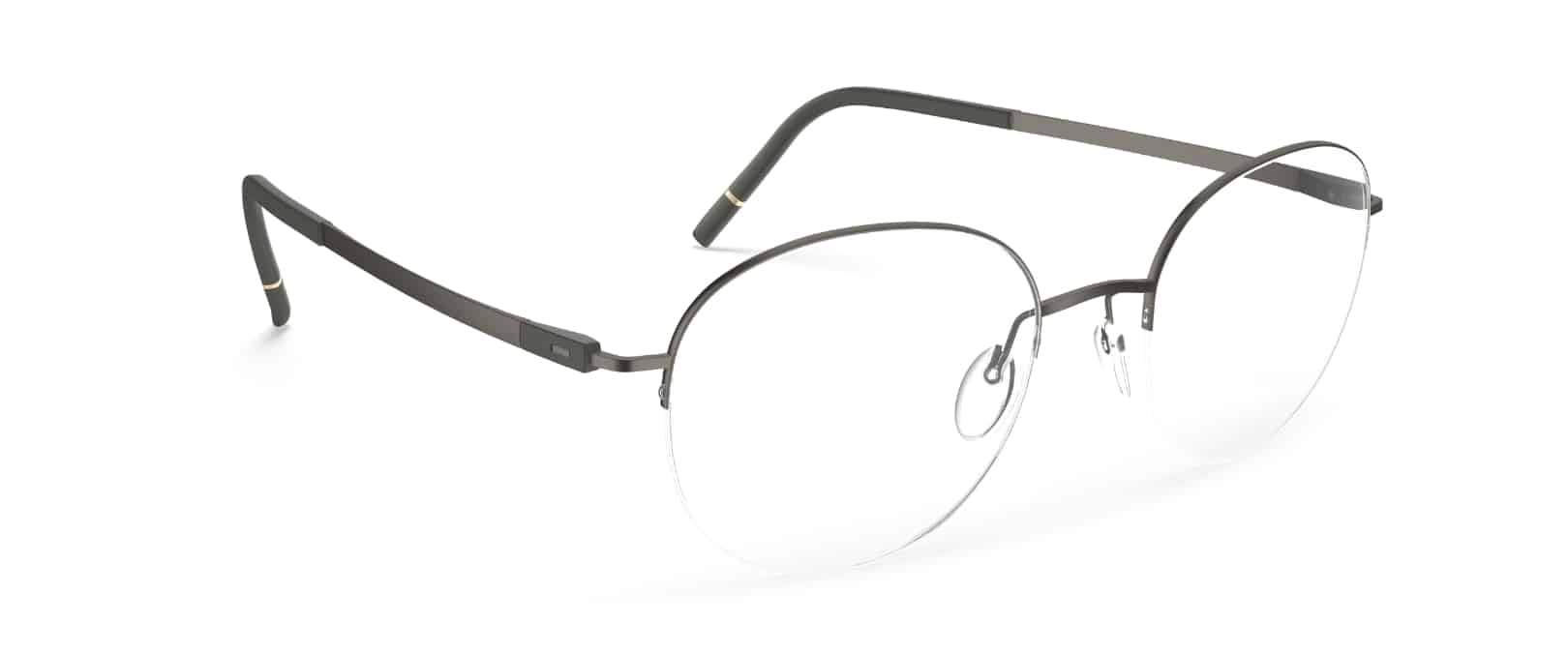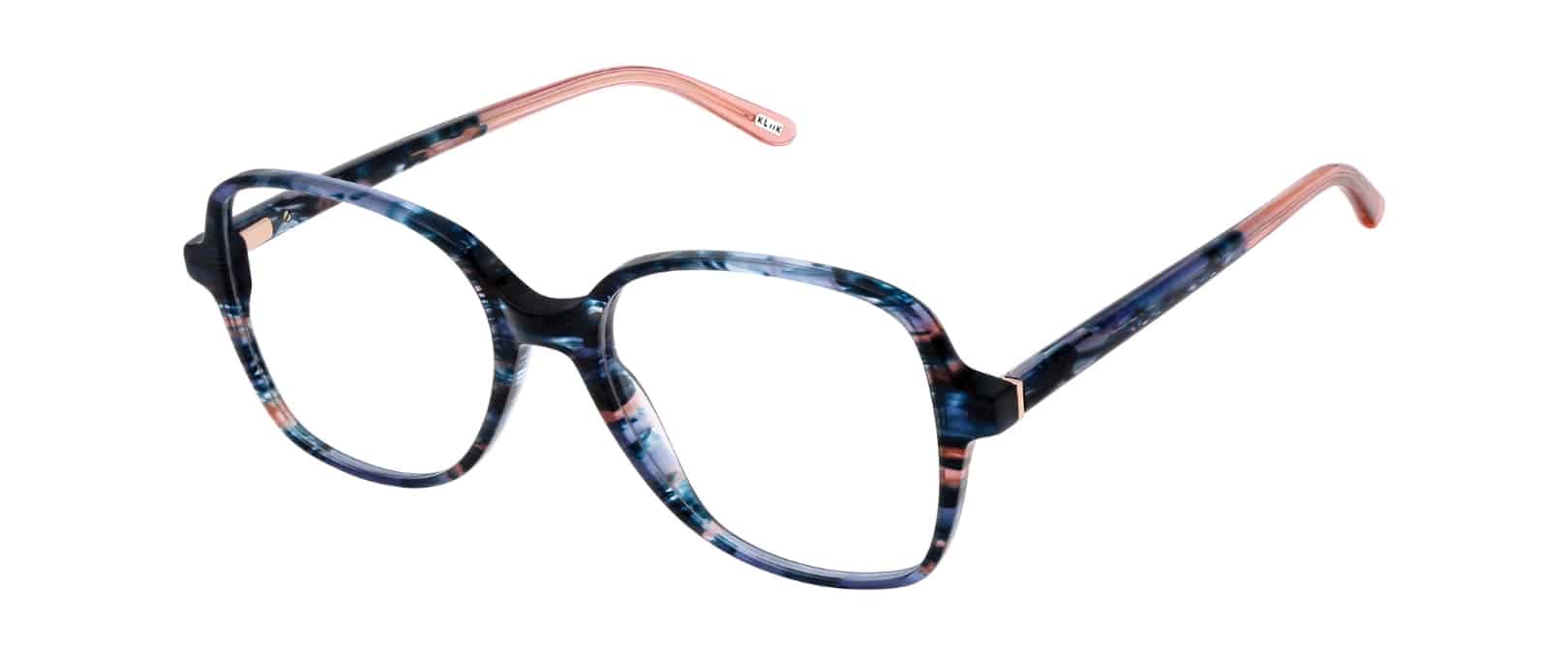Stem cells hold the promise of being able to restore vision for many types of retinal degenerative diseases, including inherited retinal diseases like retinitis pigmentosa and age-related macular degeneration. However, there are still many challenges such as low
survival and integration of transplanted cells.
In a new study funded through a FBC Restore Vision 20/20 grant, Dr. William Beltran (University of Pennsylvania) and Dr. David Gamm (University of Wisconsin) have overcome some of these significant challenges, moving this research one step closer to a potential clinical trial.
Published in the journal Stem Cell Reports, the researchers developed a robust transplantation methodology which they tested in the eyes of dogs. This involved developing a new way to inject cells under the retina and an immunosuppression regimen to prevent rejection of transplanted cells. Following this procedure, the team was excited to see that transplanted cells not only survived in the retina but also appeared to form connections with other remaining cells. This last step is crucial if new transplanted photoreceptors are going to be able to pass light signals on to other cells in the retina and finally to the brain to form images.
This FBC-funded project is ongoing, and the next stage is to continue to optimize the procedure and test if transplanted cells restore some vision in the animal model.
Rodenstock Polarized Lenses Now Available in Canada
Rodenstock polarized sun RX lenses, produced with 3D FreeForm technology, are now available from Centennial Optical. Rodenstock polarized lenses are available in Impression 2, Multigressiv MyView 2 and Progressiv PureLife Free 2 progressive lens designs, as well as Impression Mono 2, Multigressiv Mono 2 and Cosmolit Free single vision lenses. The polarized grey lenses are available in 1.50 and 1.60 indexes with Solitaire or Solitaire Pro AR.
Polarized lenses significantly reduce distracting glare while increasing and improving colour and contour perception. They improve contrast enhancement and achieve a sharper visual impression even in difficult lighting conditions.


Distributed by Centennial Optical: www.centennialoptical.com
AYA Eyewear Launches Two Highly Anticipated New Styles
AYA Eyewear announces the launch of two highly anticipated styles: Jax and Paxton. This woman-led eyewear brand continues to push boundaries with creative eyewear design, and this series is the first of its kind integrating multiple technologies. Inspired by Ts’msyen artist, Phil Gray’s iconic sculptural pieces, the new eyewear is truly wearable art.
AYA Eyewear, a conscious brand that has long supported First Nations artists and their communities, is releasing new styles Jax and Paxton featuring artwork by Ts’mysen artist Phil Gray.
These styles integrate metal inlay, CNC and digital print technology to produce striking pieces of art. The challenges of supply chain delays and COVID have not held AYA Optical back from creating their most innovative and complex production to date.
After many months of prototyping and overcoming issues related to supply chain delays, COVID and even climate related challenges, Jax and Paxton are now launched online.

Phil Gray is an artist from the Ts’msyen and Cree Nations. Born and raised in Vancouver, Phil was able to interact with and learn from many accomplished artists throughout his formative years. Phil’s work focuses on the traditional Ts’msyen style of carving and formline design, a hereditary right passed down through his mother. His lifelong goals have been to help raise the profile of Ts’msyen art, and to create art for traditional use to enrich connections with his people and heritage. Phil enjoys displaying his artwork via non-traditional items and locations as a creative way to share Ts’msyen art with a broader audience. His work can be found in private collections around the world, in various galleries and museums across North America, on organizational logos and on people’s bodies in the form of tattoos. In 2014, Gray was awarded a British Columbia Creative Achievement Award in Aboriginal Art from the Government of British Columbia.
AYA Optical creator Carla D’Angelo says: “My challenge is to work closely with the artist to help bring their vision and stories to life. It isn’t always easy, but the greatest satisfaction comes for me when I can see that they are thrilled with the final product of our collaboration. Jax and Paxton have really pushed the idea of art integration into eyewear beyond anything I have seen to date.”

When researching Phil’s work, D’Angelo was particularly struck by a custom piece he did with TELUS Gardens in conjunction with Douglas Reynolds Gallery in Vancouver. The beauty and fluidness of the design really resonated with her and Phil and D’Angelo discussed how they could bring that look into their eyewear collaboration, combining metal inlay, print and CNC technology.
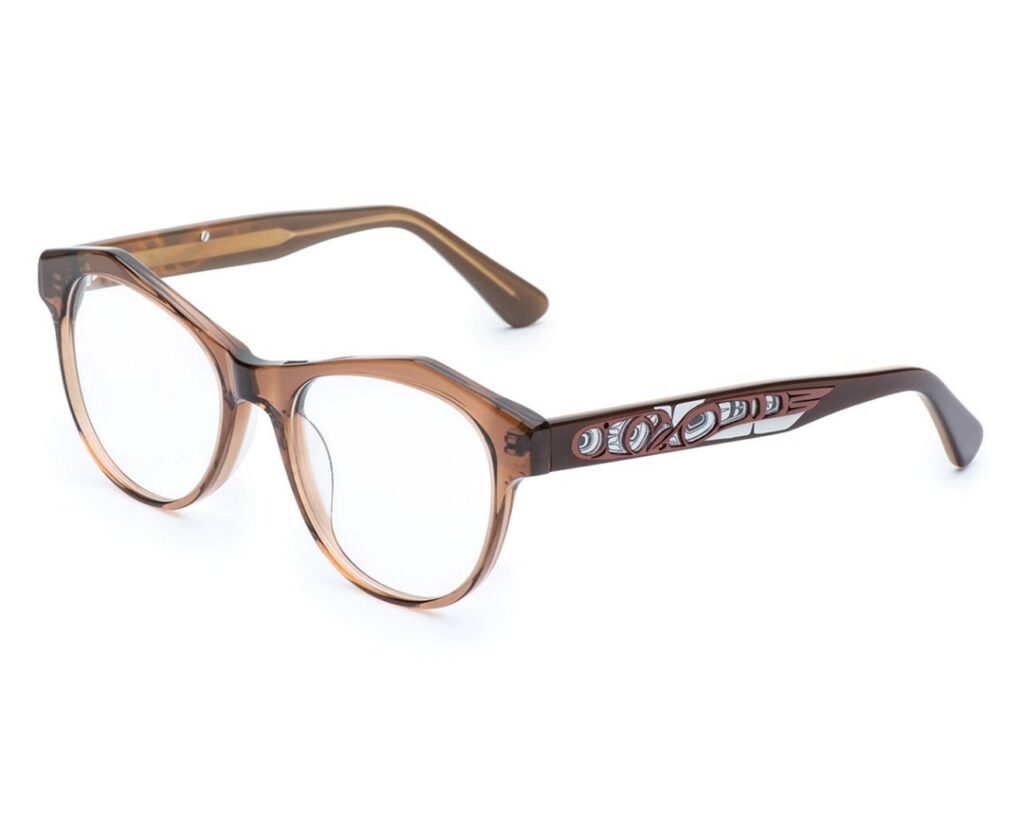
Jax optical frame is an oversized glamorous silhouette that combines contemporary angles with soft crystal colours for a very feminine and flattering look. Striking eagle artwork by Phil Gray makes a bold and tasteful statement.
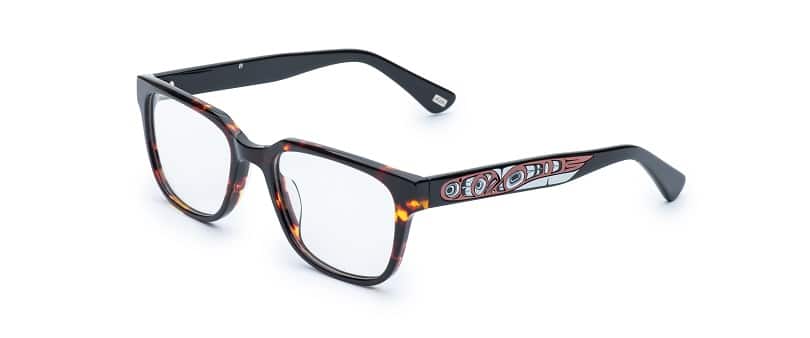
This bold and assertive frame brings a new attitude to the classic silhouette. Warm Havana brown or classic gray. These frames are handmade and really the first of their kind. Spring hinges allow a little extra room to make for the perfect fit.
These newest styles can be found at www.claudiaalan.com or Hollyburn Eye Clinic and other opticians across North America.
Eagle Design by Phil Gray
The Eagle is a symbol of freedom and strength combined with grace. The Eagle down is used in ceremonies, honoring and respecting guests.
B+L Introduces Enhanced Ocuvite® Adult 50+ Eye Vitamin Formulation with Vitamin D
Bausch + Lomb announced the U.S. introduction of enhanced Ocuvite Adult 50+ eye vitamin with 30 micrograms of vitamin D, an antioxidant proven to help support healthy cell function, which is key to protecting eye health. The enhanced Ocuvite vitamin will replace the currently offered Ocuvite Adult 50+.
“Daily stressors, including smart phones, sunlight and screens, can impact the eyes. As people age, the natural filter in the eyes may weaken and leave the eyes more vulnerable to stress,” said Joe Gordon, president, Global Consumer, Surgical and Vision Care, Bausch + Lomb. “The enhanced Ocuvite with vitamin D builds upon our original Ocuvite Adult 50+ vitamin to help replenish key nutrients that help protect the health of the eyes, particularly as people age.”
Many multivitamins do not have all three essential eye health nutrients (lutein, zeaxanthin and omega-3s) in the right levels to properly support eye health. Additionally, 42% of Americans have insufficient levels of vitamin D, which is important for eye health.
Click HERE for the full press release.
Joint Survey Underscores Need for Canadian National Vision Health Strategy
In time for World Sight Day on October 13, the Canadian Ophthalmological Society and the Canadian Association of Optometrists have collaborated for the first time on a joint access research survey in the field of vision health.
The survey is part of a continued partnership that will support the federal government’s progress toward creating a national vision health strategy, identify gaps in the system and guide interventions in the future in an effort to coordinate and address eye health issues across the country.
While the survey revealed some issues related to eye care access, mostly driven by the pandemic, it also pointed to greater challenges, including a lack of understanding among Canadians about their eye health. Among those who did not visit an eye care professional in more than two years, over one-third (37%) of respondents say the biggest reason is because they believe that there is nothing wrong with their vision. Meanwhile, in the past two years, two in five (41%) Canadians have experienced or been diagnosed with one or more changes to their eye health which would necessitate a comprehensive exam, and points to a greater need for education about eye disease and vision loss.
“Despite blindness being the most feared disability for the large majority of Canadians, we’re seeing a persistent lack of education about eye health, specifically around the major eye diseases which increase the risk of blindness without proper intervention,” says Dr. Phil Hooper, President of the Canadian Ophthalmological Society. “Vision loss carries significant costs on an individual level, but also to the public health purse. However, 75% of visual impairment is avoidable if detected and treated early, while reducing government spending in the long run.”
Canadians’ familiarity with eye diseases
The survey findings reveal that Canadians need more education and awareness of eye health and eye diseases, to fully understand the importance of regular, comprehensive exams.
When it comes to Canadians’ knowledge on the leading eye diseases, their awareness remains unchanged from last year’s survey conducted by the Canadian Ophthalmological Society. Most are familiar (62%) with cataracts, yet only one-quarter (27%) of Canadians know that cataracts are the leading cause of blindness in the country. Less than half (47%) are familiar with glaucoma (this number decreases to 37% for younger Canadians aged 18-34). Meanwhile, only 39% are familiar with age-related macular degeneration (AMD) which is the second leading cause of blindness, affecting nearly 2 million Canadians. Fewer are aware of diabetic retinopathy (22%) and contact lens-associated dry eye disease (26%).
The survey findings underscore a critical need to create a National Vision Health Desk at the Public Health Agency of Canada that will develop and implement a National Vision Strategy. Last June the Honourable Judy Sgro, Member of Parliament for Humber River – Black Creek, introduced a Private Member’s Bill, “An Act to establish a national strategy for eye care”.
The Vision Heath Desk would be responsible for the development and implementation of an evidence-based vision strategy that includes increased research funding, funding for public education and support, streamlining the approval process for new medicine and technology to treat/prevent vision loss, enhanced access to care for vulnerable populations, including Indigenous peoples, children, and seniors.
Click HERE for the full press release.





